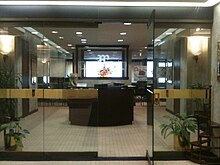
Florida Agricultural and Mechanical University (FAMU), commonly known as Florida A&M, is a public historically black land-grant university in Tallahassee, Florida. Founded in 1887, It is the third largest historically black university in the United States by enrollment and the only public historically black university in Florida. It is a member institution of the State University System of Florida, as well as one of the state's land grant universities, and is accredited to award baccalaureate, master's and doctoral degrees by the Commission on Colleges of the Southern Association of Colleges and Schools.
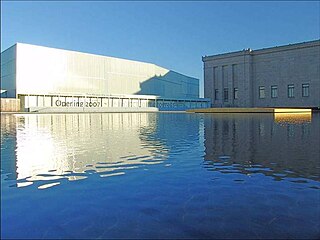
The Nelson-Atkins Museum of Art is an art museum in Kansas City, Missouri, known for its encyclopedic collection of art from nearly every continent and culture, and especially for its extensive collection of Asian art.

Graduate School of Architecture, Planning and Preservation (GSAPP) is the architecture school of Columbia University, a private research university in New York City. It is regarded as an important and prestigious architecture school. It is also home to the Masters of Science program in Advanced Architectural Design, Historic Preservation, Real Estate Development, Urban Design, and Urban Planning.

The Carnegie Museum of Art is an art museum in the Oakland neighborhood of Pittsburgh, Pennsylvania. The museum was originally known as the Department of Fine Arts, Carnegie Institute and was formerly located at what is now the Main Branch of the Carnegie Library of Pittsburgh. The museum's first gallery was opened for public use on November 5, 1895. Over the years, the gallery vastly increased in size, with a new building on Forbes Avenue built in 1907. In 1963, the name was officially changed to Museum of Art, Carnegie Institute. The size of the gallery has tripled over time, and it was officially renamed in 1986 to "Carnegie Museum of Art" to indicate it clearly as one of the four Carnegie Museums.

The Santa Barbara Museum of Natural History is a natural history museum in Santa Barbara, California.

Frederic Ward Putnam was an American anthropologist and biologist.
Lowery Stokes Sims is an American art historian and curator of modern and contemporary art known for her expertise in the work of African, African American, Latinx, Native and Asian American artists such as Wifredo Lam, Fritz Scholder, Romare Bearden, Joyce J. Scott and others. She served on the curatorial staff of the Metropolitan Museum of Art, the Studio Museum in Harlem, and the Museum of Arts and Design. She has frequently served as a guest curator, lectured internationally and published extensively, and has received many public appointments. Sims was featured in the 2010 documentary film !Women Art Revolution.

The Evansville Museum of Arts, History & Science is a general-interest museum located on the Ohio riverfront in downtown Evansville, Indiana, United States. Founded in 1904, it is one of Southern Indiana's most established and significant cultural institutions, with comprehensive collections in art, history, anthropology and science. It has a permanent collection of over 30,000 objects including fine arts, decorative arts, historic documents and photographs, and anthropologic and natural history artifacts. Also on the museum's campus is the Evansville Museum Transportation Center, featuring Southern Indiana transportation artifacts from the late 19th through the mid-20th centuries. The museum is accredited by the American Alliance of Museums.

The Indiana State Museum is a museum located in downtown Indianapolis, Indiana, United States. The museum houses exhibits on the science, art, culture, and history of Indiana from prehistoric times to the present day.

The Museum of Texas Tech University is part of Texas Tech University in Lubbock, Texas. It is made up of the main museum building, the Moody Planetarium, the Natural Science Research Laboratory, the research and educational elements of the Lubbock Lake Landmark, and the Val Verde County research site. It features collections in anthropology, fine arts, clothing and textiles, history, natural sciences and paleontology.
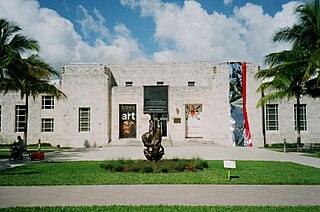
The Bass Museum of Art is a contemporary art museum located in Miami Beach, Florida. The Bass Museum of Art was founded in 1963 and opened in 1964.

The New Jersey State Museum is located at 195-205 West State Street in Trenton, in the U.S. state of New Jersey. The museum's collections include natural history specimens, archaeological and ethnographic artifacts, and cultural history and fine art objects. Exhibitions, educational activities, research programs, and lectures are also offered. The museum, a division of the New Jersey Department of State, includes a 140-seat planetarium and a 384-seat auditorium.
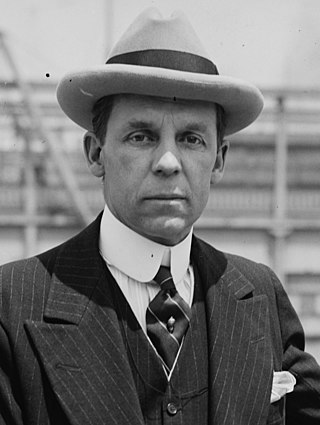
Robert Woods Bliss was an American diplomat, art collector, philanthropist, and one of the co-founders of the Dumbarton Oaks Research Library and Collection in Washington, D.C.

Founded in 1979, the Aspen Art Museum (AAM) is a non-collecting contemporary art museum located in Aspen, Colorado, United States. AAM exhibitions include drawings, paintings, sculptures, multimedia installations and electronic media.
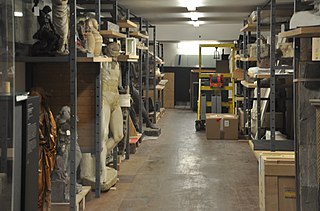
A collection manager ensures the proper care and preservation of objects within cultural institutions such as museums, libraries, and archives. Collection managers, along with registrars, curators, and conservators, play an important role in collections care. Collection Managers and Registrars are two distinct collection roles that are often combined into one within small to mid-size cultural institutions. Collection Managers can be found in large museums and those with a history and natural history focus whose diverse collections require experienced assessment to properly sort, catalog, and store artifacts. A collection manager may oversee the registrar, archivist, curator, photographer, or other collection professionals, and may assume the responsibilities of these roles in their absence within an organization.

A museum/library/archival registrar is responsible for implementing policies and procedures that relate to caring for collections of cultural institutions like archives, libraries, and museums. These policies are found in the museum's collections policy, the guiding tenet of the museum explaining why the institution is in operation, dictating the museum's professional standards regarding the objects left in its care. Registrars focus on sections that include acquisitions, loans, exhibitions, deaccessions, storage, packing and shipping, security of objects in transit, insurance policies, and risk management.
"Found in collection" (FIC) is a term used by a museum to refer to "undocumented objects that remain without status after all attempts to reconcile them to existing records of permanent collection and loan objects are completed". Despite the best efforts of museum staff, museums often have FIC items. This term was developed so that collections with incomplete provenance would be handled ethically and with transparency. Depending on the paperwork and information accompanying the material, the museum has several choices in how to proceed.

Deaccessioning is the process by which a work of art or other object is permanently removed from a museum's collection to sell it or otherwise dispose of it.
Charlotte Weidler (1895–1983) was a German art dealer, curator and art historian. Her dealings concerning artworks from the collections of Paul Westheim and Alfred Flechtheim during the Nazi–era have been the focus of several high-profile lawsuits.
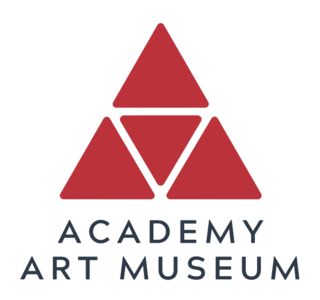
The Academy Art Museum is an art education and exhibition complex in Easton, Maryland. Its mission is to promote the knowledge, practice, and appreciation of the arts and to enhance cultural life on the Eastern Shore.

